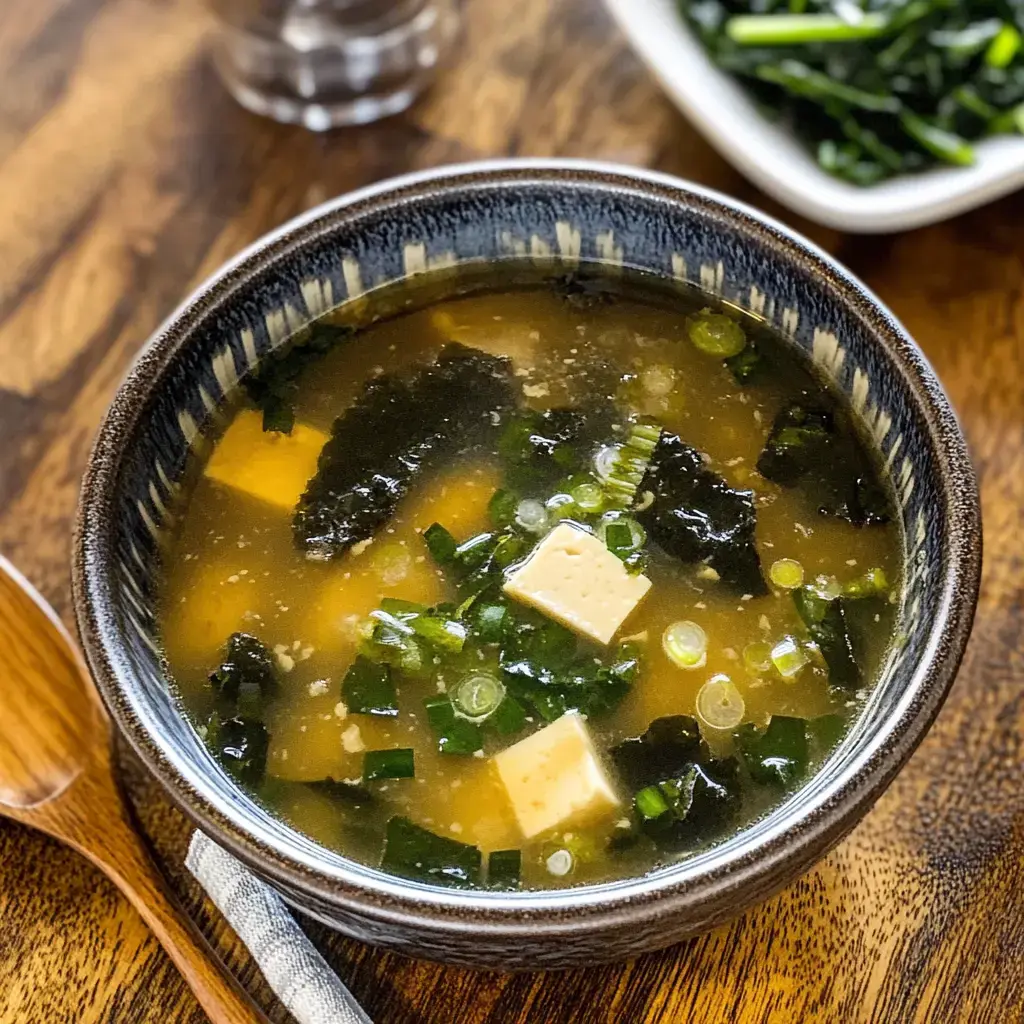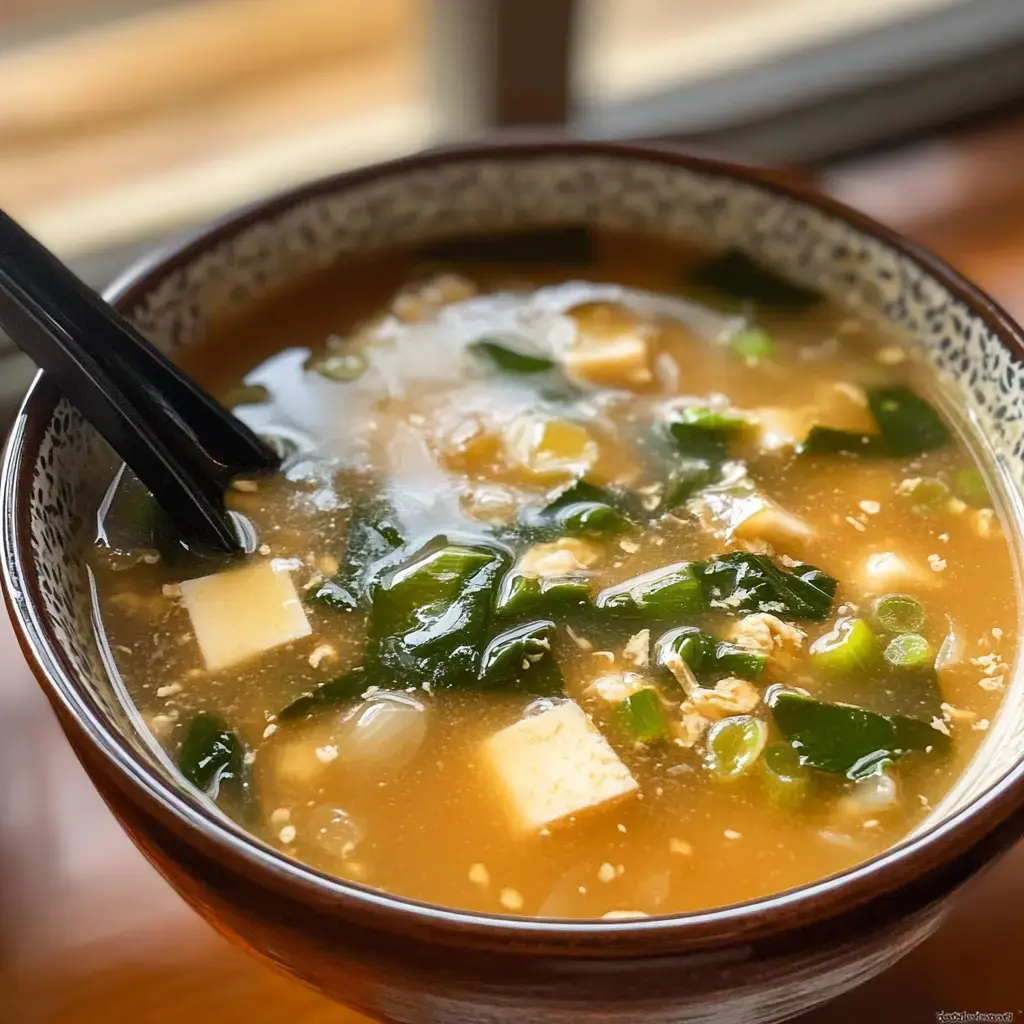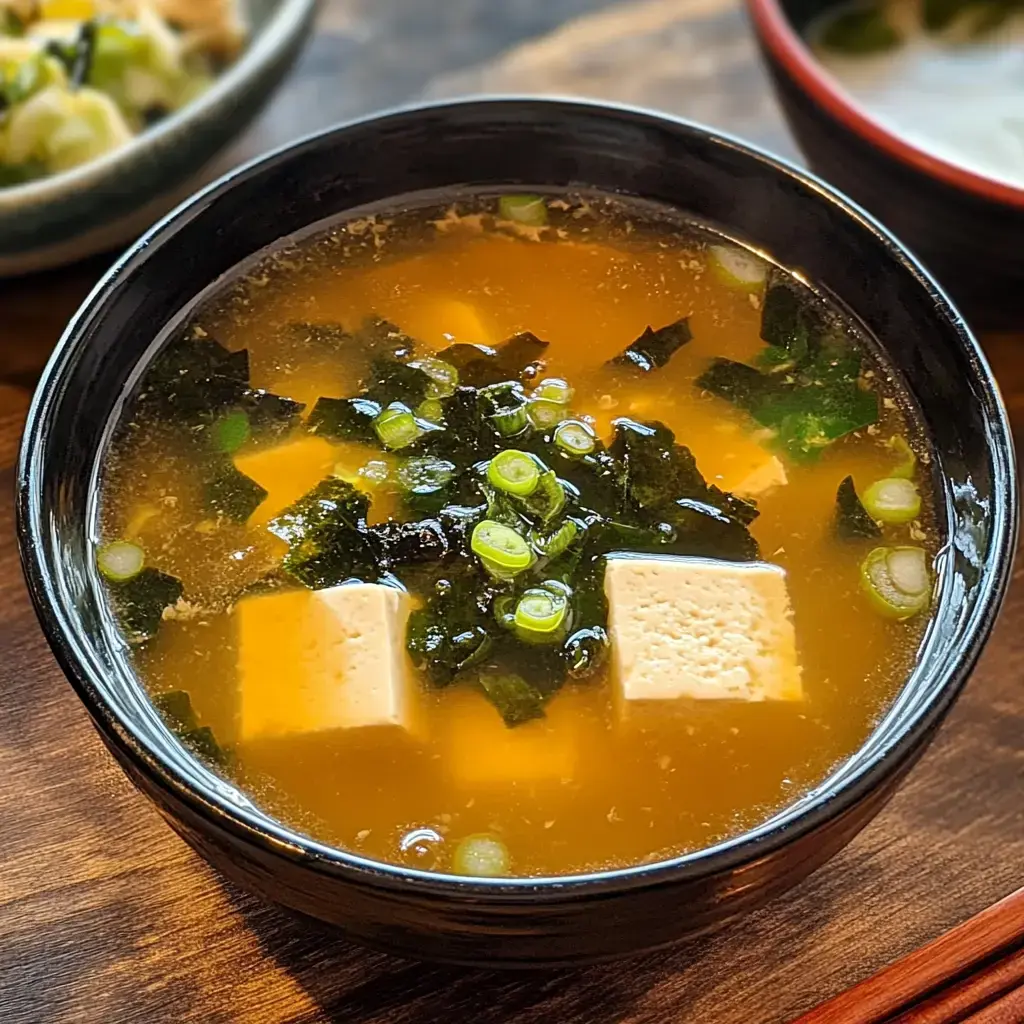 Pin it
Pin it
Here's how I make true Japanese miso soup at home! My Japanese neighbor taught me this recipe, and now it's part of my morning routine. There's nothing like that moment when you mix in the miso and your kitchen suddenly smells amazing with that deep umami scent - it takes me straight back to my Japan trips. The first time my family tried it, they were blown away that something this simple could pack such flavor!
What Makes This Soup Stand Out
This soup goes beyond basic recipes! When you create your own dashi broth from scratch, you get this amazing rich taste that store-bought versions just can't match. My sick friend couldn't believe how good the batch I brought her was - she thought it topped any restaurant version she'd had. Even my picky kids who normally only want chicken noodle now beg for this!
Ingredients You'll Want
- Dashi Components:
- Kombu seaweed pieces
- Katsuobushi bonito flakes
- Clean water
- Soup Elements:
- Premium miso paste
- Cubed silken tofu
- Wakame seaweed (dried)
- Green onions, chopped
- Mesh strainer
Cooking Process
- Dashi Preparation
- Start by putting kombu in cold water and wait for it to slowly give off its goodness. You'll know it's working when tiny bubbles pop up around the edges. Throwing in the katsuobushi feels like you're putting the finishing touch on a masterpiece!
- Creating Your Soup
- Heat the strained dashi slowly, drop in those tofu chunks, and watch as the wakame opens up like little sea flowers. Just remember the golden rule - don't let it come to a boil or you'll lose all those subtle flavors.
- Working With Miso
- Now for the key step! Always break down your miso in a small ladle before you mix it with the soup. This way every spoonful will taste just right!
 Pin it
Pin it
Pro Tips For Success
Want to know my tricks for amazing miso soup? Always use filtered water for a cleaner tasting broth. Don't cut corners on kombu soaking time. And here's a little secret - I store my miso in a special container that keeps it fresh longer. Sometimes I'll blend white and red miso together for a deeper flavor profile!
Ways To Enjoy
I always grab my Japanese-style bowls and those tiny spoons that make the broth taste even better. For a heartier breakfast version, I'll put a runny egg alongside. When I have guests over, I set up a little topping bar with extra mushrooms and different seaweeds so everyone can make their bowl just how they like it!
Storage Ideas
Try this time-saver: make a bigger batch of dashi and store it in your fridge! Then you can whip up fresh soup whenever you want. Just don't forget the two rules - never boil when you reheat, and always add fresh miso paste right before serving. I prefer making smaller amounts so each serving tastes its best.
Trying New Versions
Get creative with your soup! I throw in sliced shiitakes or baby spinach sometimes. My vegetarian buddies can't get enough of the all-veggie version with kombu-only dashi. Once I tossed in corn and potatoes and it turned into the ultimate comfort food! That's the fun part of cooking - finding the combo that works for you.
 Pin it
Pin it
The Joy This Brings
This soup has become our family's morning tradition! There's something really grounding about starting your day with such a nourishing bowl. My kids are learning to appreciate different food cultures and taking time to enjoy what we eat.
What I love most isn't just how good it tastes but seeing people's faces light up when they realize how easy yet incredible real miso soup can be! Whether you need breakfast, comfort food, or just something warm and soothing, this always hits the spot. And nothing beats watching friends discover the beauty of traditional Japanese cooking for themselves! That's the real joy of sharing food with others!
Frequently Asked Questions
- → What’s dashi and what’s it for?
Dashi is a classic Japanese broth made with dried kelp (kombu) and bonito flakes (katsuobushi). It’s the key to giving miso soup its delicious umami base!
- → How can I make it vegetarian?
You can swap bonito flakes for shiitake mushrooms or just use kombu to create a fully vegetarian dashi base. You’ll still get great umami flavor!
- → Why not boil miso soup?
Boiling can ruin the delicate flavors and probiotics in miso. Add miso after turning off the heat, and gently reheat without boiling for leftovers.
- → How long does miso soup last?
It’s best fresh, but you can keep the soup without miso for 2 days in the fridge. Stir in the miso when reheating for maximum flavor.
- → Which tofu works best?
Soft or silken tofu (kinugoshi dofu) is often used in miso soup. Its smooth texture pairs beautifully with the light broth.
Conclusion
This delicious Japanese dish brings together a rich homemade dashi broth, wakame seaweed, and soft tofu. It’s quick to make, with flavors that highlight the essence of traditional Japanese cooking. Enjoy it warm for a soothing meal.
